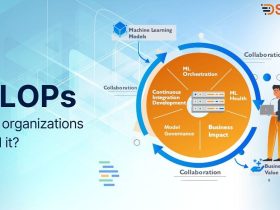Linear regression is a statistical approach used to establish a linear relationship between two continuous variables, namely dependent and independent variables. However, simple linear regression only models a straight line between the two variables, which can result in underfitting or overfitting the data. In such cases, the Generalized Additive Model (GAM) can be used to improve the accuracy of the model.
In this guide, we’ll explore the Generalized Additive Model (GAM) and how it can be used to improve simple linear regression.
What is a Generalized Additive Model (GAM)?
A Generalized Additive Model (GAM) is a statistical approach that can be used to model nonlinear relationships between dependent and independent variables. GAM is a type of generalized linear model (GLM), but instead of assuming a linear relationship between the dependent and independent variables, it allows for a flexible nonlinear relationship.
When to Use GAM?
GAM is useful when the relationship between the dependent and independent variables is not linear, and simple linear regression cannot adequately capture the relationship. In such cases, a GAM can be used to model the relationship more accurately.
How does GAM work?
GAM uses a combination of smooth functions to fit the data, which are represented by a sum of smooth functions of each predictor variable. These smooth functions can take many shapes, such as linear, quadratic, cubic, or other more complex forms, to model the nonlinearity in the data.
Advantages of GAM over Simple Linear Regression
One of the main advantages of GAM over simple linear regression is that it can model nonlinear relationships between dependent and independent variables more accurately. It can also handle multiple predictors, including categorical variables, and interactions between predictors.
How to Implement GAM?
To implement GAM, we can use various software packages such as R, Python, or SAS. In R, we can use the ‘mgcv’ package to fit GAMs. In Python, we can use the ‘pygam’ package. Before implementing GAM, it is essential to check for the assumptions of linearity, normality, and constant variance.
Conclusion
In conclusion, Generalized Additive Model (GAM) is a statistical approach that can be used to model nonlinear relationships between dependent and independent variables. GAM can improve the accuracy of simple linear regression and handle multiple predictors, including categorical variables, and interactions between predictors. To implement GAM, various software packages such as R, Python, or SAS can be used.












Leave a Reply